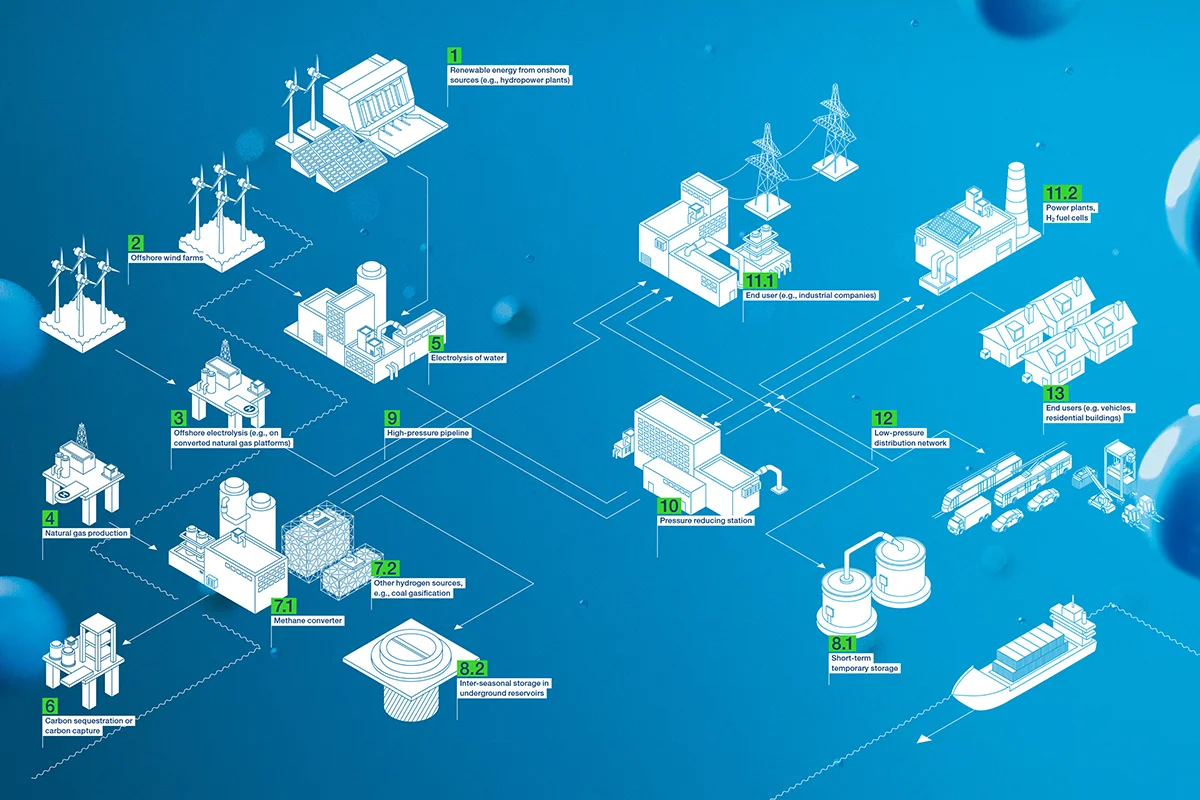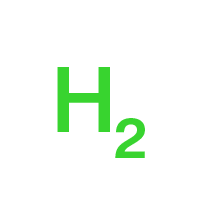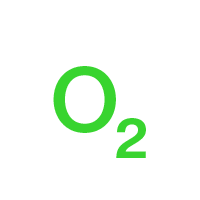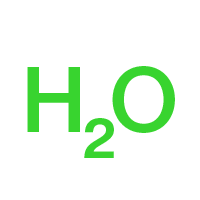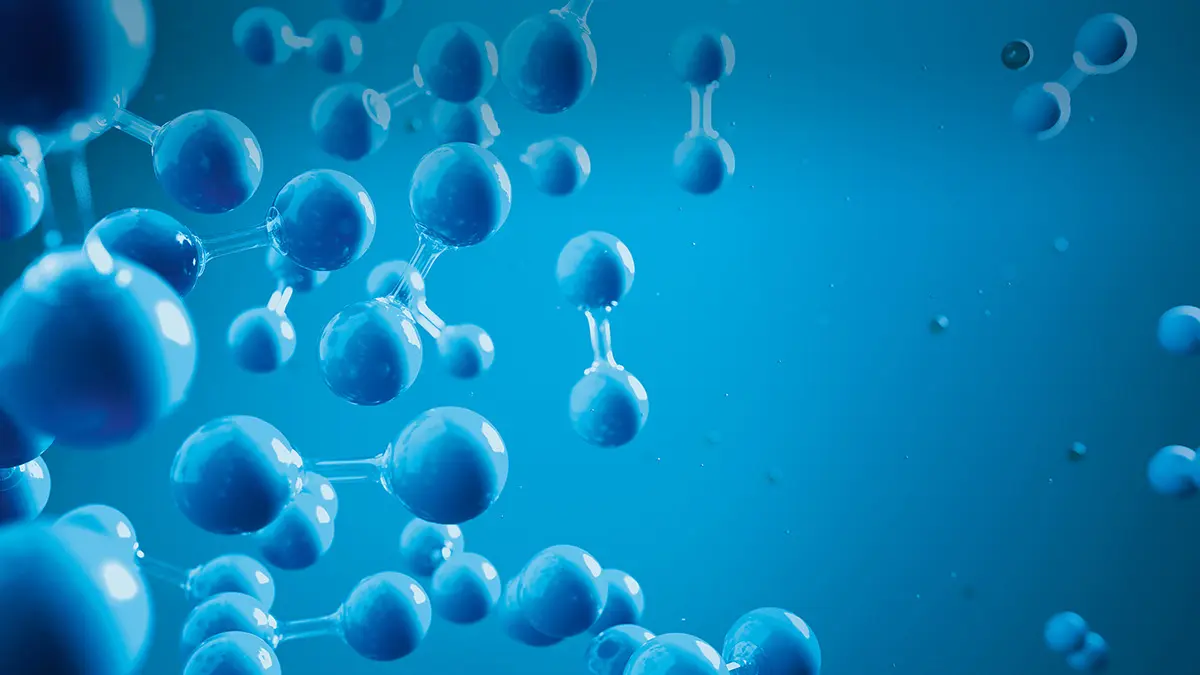
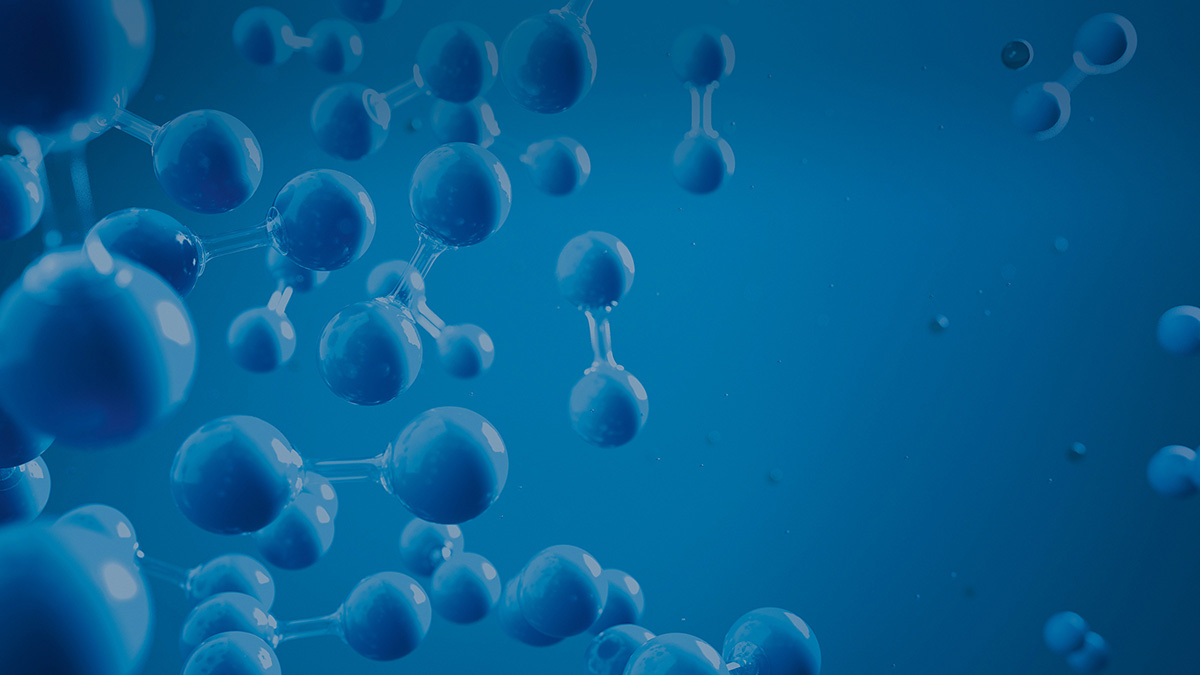
Sustainability
Filling Up with Power Instead of Charging
For many years, the fuel cell remained nothing more than a niche concept as a drive system for vehicles. But for the past year or two, the hydrogen-based version of e-mobility has been increasingly attracting the attention of politicians and industry. This is because hydrogen has clear advantages over other energy sources in many commercial vehicle applications in the off-road and heavy-duty sectors, for example – both technologically and in terms of operating costs.
The oxyhydrogen test has secured its top spot in the eternal hit parade of the most popular experiments in chemistry classes. In the experiment, hydrogen (H2) reacts quite spectacularly with oxygen (O2) after being ignited. With the loud bang still ringing in their ears, the students then write down the insight that energy is released in an explosion, as students have been doing for many decades. Christian Friedrich Schönbein discovered how to harness this phenomenon back in 1838 – in the fuel cell he developed, gaseous hydrogen reacts with oxygen to produce electricity (see info box). The residual product of this process? Nothing but pure water.
It really doesn’t get any more emission-free and environmentally friendly than this. And this makes the fuel cell an ideal platform for powering environmentally friendly vehicles. Mercedes-Benz unveiled the first prototype of a car powered by a fuel cell, the NECAR 1, in 1994. At the time, the equipment needed to generate electricity still filled the entire cargo space of a van. In the successor model presented about three years later, the technology had already shrunk enough to fit into an A-Class. Nevertheless, the technology has so far remained nothing more than a niche product. Today, however, against the backdrop of the mobility revolution, this seems to be changing.
Patrick Seidel, Product Owner H2 Storage Systems at Voith, generally shares the view of many experts who see hydrogen as the third important pillar of future mobility, alongside battery electric drive systems and more efficient hybrid combustion engines. At the same time, however, he makes one thing clear: “Fuel cells are only a viable alternative if emission-free hydrogen, also referred to as green or turquoise hydrogen, is used in the process.” He mentions this because a large amount of hydrogen is still currently produced from natural gas via a process known as steam reforming. With the help of inexpensive renewable energy available today, on the other hand, in the future green hydrogen could be produced from water via electrolysis and thus play a significant role in decarbonization.
Seidel already has suggestions on how this hurdle can be easily overcome: “Hydroelectric power plants, for example, run almost continuously at full load and therefore generate a constant amount of electricity for many hours, which can then be used to produce hydrogen by electrolysis. This process is clean and emission-free – making the resulting hydrogen green.” Excess electricity generated by offshore wind farms could also be used to produce hydrogen, Seidel says. In both cases, Voith already has technologies in place that can help produce green hydrogen. What also makes hydrogen crucial for the decarbonization of the economy and society is the fact that H2 can be used to store and transport large quantities of renewable energy. In the future, green hydrogen could be imported to Germany from Africa or America, for example. And incidentally, technology from Voith can also play a key role in this respect as well. In addition, it takes much less time to “refuel” an H2 vehicle than it does to recharge a battery. After all, even at fast-charging stations with over 50 kW, a car needs about 45 minutes until the battery is 80 percent full again. Typically, however, charging takes significantly longer. In contrast, an H2 truck with a range of 800 kilometers can be back on the road again in eight to 15 minutes, depending on its size.
Seidel doesn’t view these advantages as a repudiation of other drive concepts, however. In fact, over the long term, he believes they will all have their role to play. Each drive system has its own unique strengths, depending on the application. “In passenger cars, the use of battery electric drive systems is a viable solution,” Seidel emphasizes. Fuel cell technology’s unique strengths can, on the other hand, be leveraged in heavy-duty vehicles, construction site vehicles, and comparable off-road applications. The use of hydrogen also makes sense in various applications for rail vehicles or ships, for example in high-performance ferries such as those already in use in Norway.
Hydrogen: The Big Picture
From Production to the Consumer
Voith and its technologies play a key role in many aspects of green hydrogen production and its widespread distribution to consumers.
Voith Plug & Drive H2 Storage System
When it comes to Voith’s new storage system, the focus is particularly on heavy-duty transport applications. The concept has already successfully passed through the initial development stages. Industrial production of the system is scheduled to begin in early 2025. And not a moment too soon, because sometime between 2025 and 2030, according to a recent study by the Hydrogen Council, the total cost of ownership of hydrogen-powered commercial vehicles will be cheaper than that of today’s diesel systems or comparable battery electric drivelines in other systems. “Demand for H2-powered commercial vehicles is going to increase significantly, at the latest when this occurs,” Seidel predicts.
The system designed by Voith is based on a 700-bar type IV pressure vessel made of a CFRP material specially designed for use in commercial vehicles. Voith is using “towpregs” for the first time in the production of these tanks: “With these pre-impregnated fibers, we are setting a new standard. We manufacture the towpregs in-house at Voith Composites and can therefore also perfectly tailor the material parameters to this challenging application,” describes Seidel. Voith’s plug & drive H2 storage system thus marries two of the company’s core competencies. “Most of the other competitors either come from the automotive supplier space and don’t have a CFRP background or are CFRP manufacturers without automotive expertise. We’re at home in both fields.”
Storing the hydrogen is much more complex than with a diesel tank, however. “We’re dealing with highly volatile molecules,” Seidel explains. This is actually an understatement, because under normal pressure, hydrogen already boils at a temperature of -252 degrees Celsius. Designing a sealing system that prevents the energy source from flowing out of the tank with absolute reliability was therefore a key challenge facing Seidel’s team. But it’s also just one of many innovations in the H2 storage system. Piping, valve technology, and the flows in a gas system also have to be reengineered. The same goes for the entire mechanical structure or electrical control system, by the way. This is necessary because the path of the hydrogen from the tank to the fuel cell is significantly more complex than with a conventional diesel tank. A complex valve system, for example, ensures that the pressure of the energy source is reduced from 700 bar to the desired target pressure on its way from the tank to the fuel cell.
The modular design of the system is also high on the development team’s agenda. This allows the layout of the system to be easily adapted to individual customer requirements, essentially enabling any vehicle manufacturer to use the system. The only thing that isn’t included is the fuel cell itself.
“Our customers receive a plug & drive H2 storage system from us,” says Seidel, summing up. A standardized interface allows vehicle manufacturers to connect the tank system quickly and easily. The aim is for customers to be able to install the complete system in their vehicles in the shortest possible time. This takes no more than seven minutes, Seidel calculates.
The vast market potential of the fuel cell and thus also of Voith’s storage system can already be seen today in Switzerland, Norway, and China, for example. The Swiss have been trying to channel the growing quantity of goods that crosses the Alps day in and day out into environmentally friendly routes for decades. Much of this is being shifted to rail, where tunnel routes under the Gotthard Pass or the Lötschberg help reduce traffic congestion on the roads. The stiff carbon tax – around 88 euros per ton of CO2 has been due since 2018 – has also led operators of commercial vehicles to rethink their approach. Hyundai, for example, will deliver a total of 1,600 hydrogen-powered trucks to Switzerland between now and 2025, with the first vehicles hitting the road in October 2020.
In Norway, on the other hand, ships powered by hydrogen are currently coming into focus. This is due to the fact that strict environmental regulations will apply in the Scandinavian country’s waters starting in 2026. According to these rules, only ships with zero-emission solutions will be allowed to navigate through the fjords and near the coast. Battery solutions are not a viable alternative for large ships that travel long distances at high speed. This is because the batteries simply cannot provide enough power. In addition, the ships sometimes travel in sparsely populated areas. These regions may either lack a suitable high-voltage infrastructure or the infrastructure is already reaching the limits of its capacity, making it impossible to charge the batteries. The law has therefore put Norwegian shipping companies in a bind. At present, hydrogen remains the only alternative that is both emission-free and commercially viable. The first ships powered by H2 recently began operating in Norwegian waters. Plans are already in place to retrofit the ships that operate on the legendary Hurtigruten route as well.
Seidel also sees another field of application for Voith’s plug & drive storage system: “Our technology is easily scalable. That’s why we think gas station operators will also be interested in the storage system.” After all, the success of fuel cells as a propulsion system depends on a reliable hydrogen supply network.
Voith is currently preparing the first prototypes of the tank system for use in customer vehicles. The final certification process to the ECE-R134 standard is scheduled to begin in 2023 and will take about a year. Within the scope of a comprehensive test cycle, both the tank and the overall system must pass a wide variety of pressure, drop, and fire tests. In addition, its performance will be tested under a wide variety of different conditions. In addition, Voith will also perform its own tests in order to broaden the regulatory framework and deliver best-in-class quality to its customers. Afterwards, the company will prepare for industrial production. “Production will be carried out at our sites worldwide. Keeping distances to manufacturers short helps to significantly reduce the carbon footprint,” Seidel emphasizes. “With this product, there is a strong focus on sustainability anyway. For example, Voith is conducting intensive research into recycling CFRP materials.”
The first vehicles with Voith’s storage system should then be in operation by 2025 at the latest, complementing the various approaches to decarbonizing mobility and the innovative solutions in the H2 ecosystem offered by the technology company.

With our core competence in drive systems and technologies, we pursue the same goal worldwide: maximum efficiency. For over 150 years of excellence, we have been pursuing the system concept, the perfect interaction of all components. This includes our customers, whom we support with personal service around the world – because being successful together is and has always been our driving force.
Explore now
